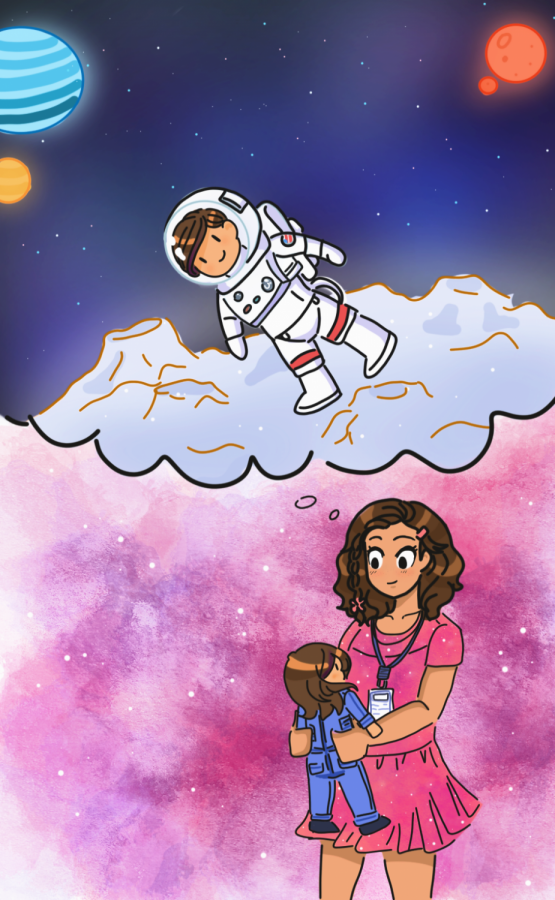Latina and Female Representation Gets ‘Dolled Up’
January 30, 2018
Earlier this January, American Girl announced its 2018 “Girl of the Year” Doll and to much surprise, they tackled two important issues with one doll release, lack of minorities being represented as role models and female empowerment in the science field.
The release of this doll made me think back to my childhood and the lack of Hispanic representation that was available, which I did not realize until my arrival at NEIU.
As I walked through campus during the first couple of days into my first semester, it really hit me that NEIU is a very diverse campus. There is not a day that goes by where I don’t encounter someone from a different religion or nationality, which took some time to get used to.
Even though I am Mexican-American, I grew up in a Northwest suburb of Chicago and was enrolled in a predominately white school district from kindergarten until my high school graduation.
When I transferred to NEIU from a community college, I had to readjust my perspective of the world around me. I became more aware of cultural differences. It was also at this time that I realized how whitewashed my own perception of the world has been.
Until I transferred into NEIU, I had never been exposed to literature from the point-of-view of different cultures or people of color, and I couldn’t remember a mainstream entertainer from my childhood that represented anyone who remotely resembled a latina.
I had blonde Barbies and watched movies where none of the children or main characters looked anything like me: a chubby Mexican girl with long dark hair and brown eyes.
The lack of representation of anyone who might slightly resemble me, or someone of my culture, in primetime American entertainment carried into my teenage years. This could be why I became increasingly excited at the announcement of the new American Girl Doll.
The doll is Luciana, an 11-year-old Chilean-American girl whose dream is to be the first person to walk on Mars.
The brown hair, brown eyes, brown-skinned doll is also the first American Girl doll to encourage young girls to develop an interest for science, technology, engineering, and math subjects, otherwise referred to as STEM.
Luciana debuted on New Years Day along with two books, both aimed at enforcing her dreams of becoming an astronaut.
In the developing process of the doll, American Girl reached out to astronaut Megan McArthur Behnken, former NASA Chief Scientist Ellen Stofan, U.S. Space and Rocket Center CEO and Executive Director Deborah Barnhart and NASA Manager of Strategic Alliances Maureen O’Brien to ensure they were getting an accurate female point-of-view regarding a field that is otherwise largely inhabited by men.
However, the gap in gender representation in NASA is slowly changing. In 2016, for the first time in NASA history, 50 percent of the astronaut class was composed by females.
That’s why the release of Luciana was a huge step in the right direction regarding the representation of women in fields, where they are often overlooked.
“We wanted to make sure we were getting it right, but we also wanted to bring attention to the fact that there are some really amazing women in this field,” said Julie Parks, director of public relations at American Girl. “This is something that could happen for you. It’s no secret that females are underrepresented in this area.”
As if Luciana’s representation of female empowerment is not enough, her descent has caused great applause within the Latinx community.
Latinx are often underrepresented, not only in work fields such as engineering and technology but also in entertainment media. A study released in 2016 by the USC Annenberg School of Communication and Journalism reported that most of the entertainment media “fails to represent the demographic composition of the U.S.”
The study revealed that Latinos hold small quantities of speaking roles in film and TV, even though they made up about 17.4 percent of the U.S. population. The study also pointed out that out of 11,000 speaking characters studied in TV and film, only 5.8 percent were Hispanic or Latino.
Luciana’s heritage plays a big part in her importance.
NASA Chief Scientist Ellen Stofan explained, “Letting girls of color around the world know they can be astronauts or achieve other great things if they try, that was important to all of us. We’re pleased that American Girl decided to make her of Latina descent. My biggest fear is that young girls of color will think, ‘people who look like me don’t do that.”
And it’s true. People like me didn’t hold leadership roles in high grossing blockbusters. Hispanic, brown-skinned girls didn’t star as the lead in a primetime show and they definitely were not portrayed with dreams of walking on Mars.
We were not represented in dolls, barely acknowledged in Toys ‘R’ Us toy campaigns, and were often only compared to Dora the Explorer, who didn’t even air until 2000, missing my childhood entirely.
While some might argue – and they have on the Facebook comments of the articles announcing the new doll – that race should not matter and that kids don’t pay attention to the color of a doll’s skin, that is far from the truth.
Some of us might not realize it until we grow up, like me, that we are living in a whitewashed culture.
Others might carry that knowledge since they are children after realizing that very few dolls come in darker skin colors. Regardless of when this realization kicks in, seeing a popular mainstream company like American Girl reach out to young children with a positive message of inclusion can only be a positive step to take.
As social movements that address female representation and issues, such as the Women’s March and #MeToo, bring attention to certain female issues, it is important that children are given positive ambitious role models that they can look up too and aspire to be like from an early age.
Luciana doesn’t only represent minorities, she represents all of us.








